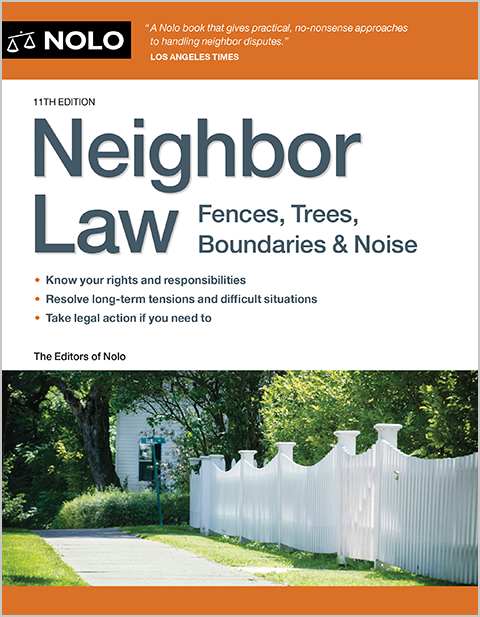Can I Move My Neighbor’s Stuff Off My Property?
Having to deal with neighborly issues may be difficult and even irritating. One frequent problem is when your property is infringed upon by a neighbor’s possessions.
This post will discuss how to avoid your neighbor from putting their items on your premises, if you can relocate their stuff off the area, and what you should do if their pet routinely trespasses.
The article will also go through how to deal with these circumstances in a legal and respectful way. So if you’re wondering, can I move my neighbor’s stuff off my property? Let’s find out!
So Can I Move My Neighbor’s Stuff Off My Property?
It’s important to determine the borders between your property and that of your neighbor before taking any action. To make sure you have legal right and an accurate understanding of where the land’s borders are, you might need to reference your property deed, a survey, or even involve a professional surveyor.
It’s usually best to speak with your neighbor and have a friendly talk after you’ve established the limits. It’s better to explain the circumstances before requesting to remove their possessions from your premises. Give them enough time to follow your instructions.
If an informal method is unsuccessful, you can think about legal remedies by looking through local regulations and laws. While local rules might differ, in certain circumstances you might be able to relocate the things yourself or hire a professional to remove them. However, it’s important to follow the law’s guidelines and get legal counsel before making any decisions.
In general, there are restrictions on when you can remove your neighbor’s possessions from your land. For instance, if the objects are dangerous or if you’ve given your neighbor plenty of time and warning to remove the items themselves.
In these circumstances, it’s wise to keep track of the problem, including any interactions with your neighbor, and obtain legal advice to make sure you’re doing it legally.
Understand Your Rights
If you want to fully understand neighbor law so you can solve your next boundary dispute problem, you should consider purchasing this Nolo Neighbor Law book, which specifically covers boundary lines, and other common neighbor property law issues.
The last thing you want is for your neighbor’s property dispute to turn into an extensive and expensive lawsuit, so it makes sense to invest in this book which will give you all of the facts at a much cheaper price. The book covers a wide variety of neighbor issues you’re likely to encounter, so you will get more than just one use out of this purchase.
View the Official 2023 edition – Neighbor Law
Keeping Your Neighbor’s possessions off Your Property
If your neighbor putting stuff on your property is a continuous problem, there are various proactive steps you may take to stop future incursion. This section will go through a variety of methods, but reasonable measures such as putting up signs, building a physical barrier, keeping lines of communication open, and recording incidents of incursion.
Putting up a Fence or Other forms of Physical Barrier
Installing a physical barrier or a fence at the property line is one practical technique to stop your neighbor from bringing their possessions into your land. If where the property line lies might be a gray area, a fence can act as a visible delineation of a boundary and prevent unintentional invasion.
You could take into account adding walls, hedges or ornamental landscaping features in addition to conventional fence to mark the property border. Consult your local zoning rules and regulations before constructing any barriers on your property lines to guarantee compliance.
Posting signs saying “Private Property” or “No Trespassing”
Having neighbor’s stuff on your property isn’t ideal, so posting “Private Property” or “No Trespassing” signs around the edges of your land is another protective strategy. These signs assist in reinforcing the idea that your property is not open to the public and discourage neighbors from leaving their stuff there. Make careful to install signage along the property boundary at regular intervals and to make sure they are clear and readable.
Maintaining an Open Communication with Your Neighbor
If your neighbor keeps on putting things or stuff on your property, or over the property line, talking to them about it should help resolve the issue. For the purpose of avoiding and resolving border conflicts, open communication is crucial. Keep a positive connection with your neighbor and take care of any issues as soon as they come up.
If you would like to write a complaint letter to your neighbor, here is a template you can use to help you communicate your concerns in a civil manner.
You are more likely to discover equally beneficial solutions to problems that can emerge, including encroachment, if you cultivate a positive connection with good neighbors. Regular contact with your neighbor might urge them to respect your property lines and help avoid misconceptions.
Neighbor’s putting stuff on your property may mean you can’t fit your vehicle in the driveway, or cause you other issues. Explaining these issues to your neighbor will help them understand the problem.
If your neighbor is trying to claim their stuff isn’t on your property, they may be unsure of the exact property lines. To solve this, you could compare deed copies with your neighbor to establish the official lines. If your neighbors are reasonable people, they will likely feel embarrassed by the situation, apologize, and remove their stuff off your property.
Documenting Instances of Encroachment
It’s crucial to accurately keep track of each incident of invasion if you consistently face problems with it. Document the items that belong to your neighbor that are on your property using pictures or video, and keep a written log of the times and dates of each incident.
Also, keep a record of any conversations you have about the problem with your neighbor. If you need to seek legal assistance or pursue other options for settlement, this evidence may be essential.
By putting these methods into practice, you may prevent difficulties with encroachment issues and support the upkeep of a pleasant and polite interaction with your neighbor. Don’t forget to keep up with local rules, property laws, and regulations, and if required, get legal advice.
Dealing with Your Neighbor’s Pet on Your Property
Consider taking the following actions if your neighbor’s pet is regularly on your property and over your property line:
- Talk to your neighbor in a polite manner about the situation and request that they restrict their pet. Make recommendations, such as putting up a fence, utilizing a leash, or designating a certain area for the animal to roam.
- Learn about the local animal control rules and regulations. This will make it easier for you to comprehend your legal options and what you should do if your neighbor ignores the problem.
- Consider contacting your neighborhood’s animal control office or the police for help if your neighbor’s animal persists in invading your property. Be prepared to show evidence if the problem persists, such as pictures or videos.
- Consult a lawyer to learn more about your legal options, which may include asking a judge to issue a court order compelling your neighbor to keep their animal off your land.
How to manage Conflicts with Your Neighbor
Patience, discussion, and compromise are essential for solving problems with your neighbor. This section will cover a variety of methods, such as keeping a polite approach, documenting conversations, providing solutions, and enlisting expert help when necessary.
Maintain a Calm and Respectful Atmosphere
Maintaining a composed and kind attitude is essential while speaking with your neighbor about problems. Avoid yelling, acting aggressively with your body, or making use of personal assaults.
Instead, concentrate on the particular issue at the moment and state your concerns in a direct, precise manner. You may create a setting that is conducive to problem-solving and lessen the possibility of tensions rising by being composed and respectful.
Maintain a Record of Communications in writing
Keep a written record of all interactions with your neighbor to aid in the resolution of disagreements. Whether you speak with someone in person, over the phone, or in writing, make sure to note the dates, times, and details of your discussions.
These documents might be a useful resource if you need to use mediation or legal counsel. They can also aid in maintaining responsibility and assisting in settlement by keeping track of any agreements or assurances made by both sides.
Providing Solutions and making compromises
It’s crucial to provide solutions and show a willingness to negotiate when resolving problems with your neighbor. You demonstrate goodwill and a sincere interest in locating a mutually beneficial solution by outlining specific steps that can assist in solving the issue.
Be open to your neighbor’s comments and ideas, and be prepared to change your expectations if required. Compromise may frequently lead to a more agreeable solution for both parties.
Getting Professional Help
It might be important to look for professional help if your efforts to address conflicts with your neighbor are ineffective. This may consist of:
- Mediation: A settlement between you and your neighbor may be facilitated by a neutral third party, such as a mediator. Comparing mediation to litigation, the former is frequently a less confrontational and more inexpensive choice.
- Legal counsel: You can get important advice on your rights and alternatives in resolving the disagreement by speaking with an attorney. A professional attorney can also guide you through any required legal procedures.
- Law enforcement: In situations involving threats, harassment, or illegal conduct, getting in touch with your neighborhood police department may be essential. Make sure to give them any relevant paperwork or proof you have to back up your assertions. This should be a last resort strategy, as it will be extremely difficult to come back from this with your neighbor, which might be really awkward if you have adjoining properties.
You may approach neighborly conflicts in a helpful yet effective way through the application of these techniques, which raises the possibility of reaching an amicable conclusion for all parties.
Conclusion
Although dealing with encroachment issues and boundary disputes may be difficult, maintaining a polite and respectful communication with your neighbor is frequently essential to finding solutions. Be cautious to know your legal rights and obligations before removing your neighbor’s possessions from your property.
Always choose negotiation and dispute resolution over unilateral legal action, and when it’s essential to safeguard your rights, consult a lawyer. You may assist establish a peaceful living environment for you and your neighbor by acting proactively and collaborating.



